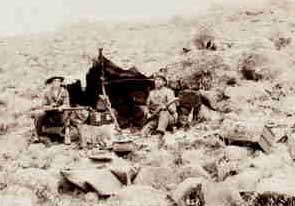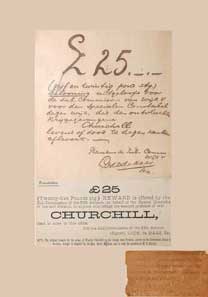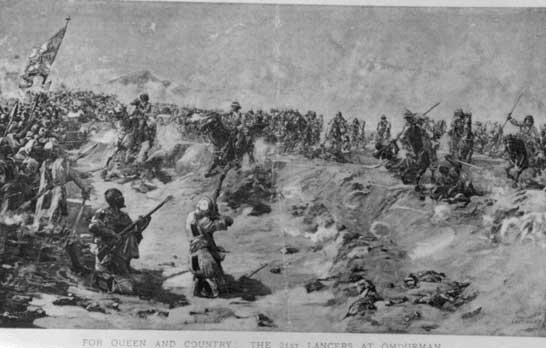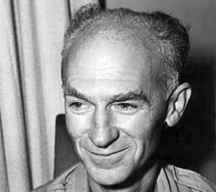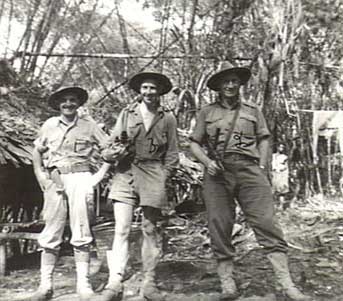|
The Role of the War Correspondent
Introduction. Still photographs made reports more graphic, then the movie camera came to bring yet another dimension, as news reels, full length documentaries came to our theatres. Television ushered instant war into the very living room, and now satellite TV will do its bit to mould public opinion, and perhaps turn a once popular war into a hated one. Some war correspondents over the years.
Winston Churchill. He went to Sudan, seconded to the 21st. Lancers with Lord Kitchener's punative expedition against the Mahdi. He took his place in the last great cavalry charge in British history. He wrote a book The River War, a riveting story of his time in the Sudan with Lord Kitchener. Two years later he was off to South Africa to cover the Boer War, some how filling both the role of a Lieutenant in the Army and as a war correspondent for a London newspaper. He was captured by the Boer Commandoes, imprisoned, escaped to make his way across 300 miles of hostile territory, and then send off his colourful dispatch to the Morning Post. This escapade brought him fame.
Censorship at Army Head Quarters. With the United States entering the war, General John J. Pershing in command of the Allied Expeditionary Forces applied censorship to all American correspondents. The Chicago Tribune's Floyd Gibbons bucked Pershing's limiting edict on unauthorised visits to the front, but paid the price by being machine gunned by German soldiers as he joined a platoon of Marines at Belleau Wood in June of 1918, and lost an eye as a result.
Gallipoli. Keith Murdoch from the Melbourne Herald visited there but briefly on his way to London to take up a position there. He strongly critiscised the top British Command at Gallipoli, was quite scathing about General Hamiliton in his letter, about conditions and decisions made at Gallipoli which was provided for the Dardanelles Committee, eventually the House of Lords recommended the removal of Hamiliton and that Gallipoli be evacuated. The power of a correspondent's pen being really demonstrated. WW2. Another well known and respected Australian, Alan Moorehead covered the North African campaign with style and succinct dispatches, he wrote a best seller too, " Desert War, the North African Campaign 1940-1943." Ernest Hemingway reported on WW2 in France, but tended to do his own thing, he had his own jeep following the exploits of a group of French Resistance fighters.
Eisenhower attracted a large press corps at his HQ in Europe, they mostly reported the big picture, but the celebrated US correspondent, Ernie Pyle wrote a column that was used in 300 daily papers and 10,000 weeklies in the United States, so one may well imagine the clout he carried. His forte was to concentrate on individual soldiers, the average Grunt, doing it the hard way, as he marched across France and then Germany. He wrote articles using phrases such as: " I love the Infantry because they are the underdogs." Pyle went on to follow the island hopping US Marines in the Pacific war, and on Ie Shima was killed on April 8th. 1945 with the war having but a few more months to run. He was one of 37 American correspondents to die in WW2. In the struggle of Australian and US troops in New Guinea against a fanatical Japanese foe, the famed Australian photographer Damien Parer shot some superb black and white footage, recording the plight of our struggling soldiers in the awful conditions of mud, jungle, malaria, before he too was struck down.
Post WW2. There after governmental control of war correspondents tightened, in the Gulf War we saw the arrival of the embedded correspondent, shackled to a specific unit, and basically reporting what the Commanders want us to hear. In Iraq, correspondents are even further isolated, many stuck in the Green Zone in the capital Baghdad, reporting on the ever present car bombings. Conclusion. For the lack of War Correspondents of the calibre and independence of Pyle, Wilmot, Moorehead, and Parer we are indeed the poorer. |

